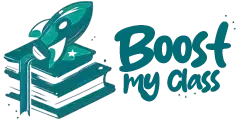Liberty AVIA 400: A Week of Expert Help Awaits – Sign Up Now!
$0.00
Why You Should Study Liberty AVIA 400
Enrolling in Liberty AVIA 400 – Aviation Human Factors is like unlocking the secrets of human behavior in aviation. Whether you’re already part of this course or considering it, let’s delve into the fascinating world of aviation human factors.
150+ ![]()
Qualified Tutors
You may need help with:
- Liberty AVIA 410: Enjoy 7 Days of Free Tutoring Help!
- Liberty AVIA 420: A Week of Expert Help Awaits – Sign Up Now!
- Liberty AVIA 420: 7 Free Days of Tutoring Help Just for You!
- Liberty AVIA 360: Join Today We're Giving You a Week Free!
- Liberty AVIA 355: First Week of Dedicated Support for Free!
- Liberty AVIA 350: 7 Free Days of Tutoring Help Just for You!
In this course, you’ll explore the crucial link between human behavior and aviation safety. It’s not just about flying machines; it’s about understanding how humans interact with complex aviation systems. You’ll delve into topics like decision-making, communication, and error prevention.
One of the most captivating aspects is realizing the impact of human factors on aviation safety. You’ll learn how insights into human behavior can lead to safer skies. It’s like discovering the keys to preventing accidents and enhancing the overall aviation experience.
From a career perspective, this course is a game-changer. Aviation professionals who understand human factors are highly sought after. Your expertise in this field can lead to job opportunities in safety management, accident investigation, and even aviation psychology.
Moreover, this course nurtures empathy and a deep appreciation for the human side of aviation. It empowers you with tools to enhance safety, improve communication, and prevent errors. It’s a journey that promises insights, knowledge, and a profound impact on the world of aviation human factors.
150+ ![]()
Qualified Tutors
What Are The Career Benefits of Liberty AVIA 400
Enrolling in Liberty AVIA 400 – Aviation Human Factors offers a wealth of benefits, both in terms of your personal understanding and your career prospects.
First and foremost, this course provides a deep insight into aviation human factors. It’s not just about flying planes; it’s about comprehending how human behavior impacts aviation safety. You’ll explore decision-making, communication, and error prevention, gaining a holistic view of human factors in aviation.
From a career perspective, the advantages are significant. Aviation professionals who grasp human factors are in high demand. Your expertise opens doors to diverse job opportunities in safety management, accident investigation, and aviation psychology. It positions you as an invaluable asset in the aviation industry.
Furthermore, Liberty AVIA 400 equips you with practical skills that extend beyond the classroom. You’ll learn how to enhance safety, improve communication, and prevent errors in real-world aviation scenarios. These skills are not only transferable but also highly valuable in various career paths.
But it’s not just about the practical benefits; it’s about fostering empathy and a profound appreciation for the human side of aviation. This course empowers you to make a tangible impact on aviation safety, ensuring the well-being of passengers and crew. It’s a journey that promises insights, knowledge, and a genuine sense of contributing to the aviation community.
In conclusion, Liberty AVIA 400 isn’t just a course; it’s a gateway to a brighter future. It empowers you with knowledge, enhances your career prospects, and fosters a deep understanding of the vital role of human factors in aviation safety. Embrace the possibilities, expand your skills, and prepare to make a positive difference in the world of aviation human factors.
150+ ![]()
Qualified Tutors
Why You Should Hire Us To Take Your Class?
If you ever find yourself stuck while taking “Liberty AVIA 400 – Aviation Human Factors,” our service is here to lend a helping hand:
Expert Assistance: Our experienced tutors are ready to assist you, whether it’s a specific task, assignment, or managing the entire class. We ensure you make progress in your course.
Regular Updates: You won’t be left in the dark. We provide progress updates based on your preference, whether you prefer daily or weekly reports. You’ll always know how your course is progressing.
Simple Setup: Getting started is effortless. Just share your login details with us, and we’ll take over. You can relax while we manage your coursework and assignments.
Retain Control: While we handle your class, you’ll retain access to monitor your progress. We believe in transparency and open communication to align with your academic goals.
With our service, you can focus on what matters most to you while we work diligently to ensure your success in “Liberty AVIA 400 – Aviation Human Factors.” It’s your key to a smoother learning experience. Sit back, relax, and watch your understanding of aviation human factors take flight!
150+ ![]()
Qualified Tutors
Frequently Asked Questions
1. How can your service assist me if I’m struggling with Liberty AVIA 400 – Aviation Human Factors?
Our service offers expert assistance. Our experienced tutors are ready to help with specific tasks, assignments, or even manage the entire class on your behalf, ensuring you make progress in your course.
2. What kind of progress updates can I expect if I use your service?
We provide progress updates based on your preference, whether you prefer daily or weekly reports. These updates keep you informed about the work we’ve completed in your course.
3. Is it safe to share my login details with your service?
Absolutely. Your privacy and data security are our top priorities. We have stringent privacy measures in place to ensure the security of your login details and handle your information with the utmost confidentiality.
4. Will I have any control over my course if I use your service?
Yes, you will. While we manage your coursework and assignments, you’ll retain access to monitor your course’s progress. We encourage open communication to ensure our efforts align with your academic goals.
5. How do I get started with your service for Liberty AVIA 400 – Aviation Human Factors?
Getting started is simple. Just reach out to us and provide your login details for the course. Once we have that information, we’ll take over and handle your academic responsibilities, allowing you to focus on other aspects of your life.

